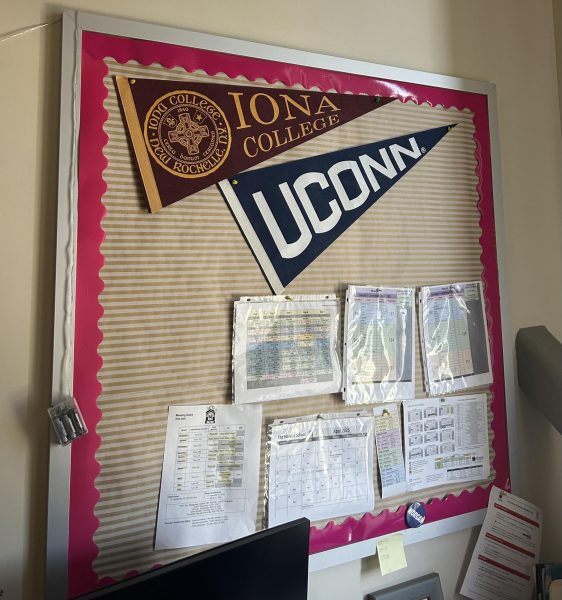If you have ever read, “The admissions committee cannot make a final decision on your application for a place in next year’s class” but then follow with, “However, because of your academic promise, we have decided to place you on the waiting list,” then you understand the heartbreak of the admissions process.
College decisions are daunting for senior students and with an outcome like a waitlist, where admission is not guaranteed, a difficult route to navigate is introduced.
A waitlist notification signifies that a student is neither accepted nor rejected, but placed on a list in event of potential openings for enrollment. Big Future, also known as College Board, explains this further, stating a waitlist is “when you meet the admissions requirements, but the college has already accepted the number of applicants it has room for. If a spot becomes available later on, you may be offered a place.”

When waitlists occur, it is difficult to know whether or not a position will open up. Oftentimes, this warrants a commitment to another institution in wait of further notification.
All deposits must be made by May 1st to declare for a college or university, meaning students must commit to another school before knowing if they will be off of the waitlist. Such deposits typically range from $100-$300 in order to secure their position for the upcoming school year.
This is challenging, considering students may have been waitlisted by their top choice. Ultimately, students may have to settle for another school without any true confirmation of where they will end up.
Deciding to stay on the waitlist is a difficult decision in its own right, as there are many factors to consider.
Different institutions present different metrics for their waitlist enrollments. IvyWise has posted statistics based upon waitlist admissions from the class of 2028, last year’s graduating class.
From IvyWise, it can be concluded that waitlists can vary by size, which changes their waitlist acceptance rate. For example, UCLA accepted 1,211 students off of their waitlist, but there were 9,198 students on the waitlist to begin with. That puts their waitlist acceptance rate at only 13.17%
When deciding to stay or remove oneself from the waitlist, it is important to research the specific institution and their trends. Such information can be found using the specific school’s information online, or through websites such as IvyWise and Top Tier Admissions.
Beyond acceptance rates, understanding possible conditions attached can be vital. If waitlisted students are accepted after the May 1st deadline, it is important to consider limited housing and financial aid at the time of enrollment.
If you are accepted from off the waitlist at a later date, housing options may be more scarce, as a majority of already accepted students have applied. The same goes for financial aid, you may be less likely to receive aid as other students may have consumed these funds already.
If these are limiting factors for students, staying on the waitlist may need to be considered more closely.
If students are really interested in the school, they may write letters of continued interest to demonstrate their desire to attend. In these letters new academic achievements and supplemental information can be advocated for.
If students have any new extracurriculars, awards, or grade updates, those would be perfect items to explain in such letters.
With that being said, students’ academic and extracurricular commitment needs to remain high.

Guidance counselor Mrs. Couch shares insight on the process, as she recognizes “waitlists make it difficult to make a decision.”
Mrs. Couch recommends “calling the school, talking with their admissions representative, and seeing what the likelihood of coming off the waitlist is going to be.” The most beneficial strategy is to perform “proactive things,” such as offering quarter three and four grades, asking for interviews, or meeting them in person.
Mrs. Couch explains that there are “schools out there for everyone, so don’t be discouraged and explore and visit your other options.”
More and more schools are becoming highly selective, so if a student is waitlisted “it doesn’t mean that they don’t have a fit somewhere because everybody has a fit, so don’t take it personally” she explains.
Students being at the forefront of such decisions have felt this toll across the college admissions process.
Katie Nguyen, a current senior, commented on her reaction to being waitlisted, describing that she felt “humbled,” and that “it feels much worse than a rejection” due to the uncertainty.

Katie had been waitlisted at one of her dream schools, but at the time of the decision she had already settled on the school she would be attending in the fall, Smith College.
Even though she feels “ecstatic” to attend the school she is committed to, as she describes it as “perfect for me,” it doesn’t mean that she still doesn’t feel “a twinge of jealously seeing other people committing there.”
Senior, Josephine Simon, was deferred by one of her top schools meaning she applied early action.
Early action means you apply early to a school, and in turn hear back sooner. This decision is not binding, unlike Early Decision, where if you are accepted you are required to attend.
Schools may “defer” students, meaning they are not rejected from the school, but sent to the regular decision pool, where they will hear their decision back later in the year.
However, Josephine was waitlisted in the regular decision pool, and initially she was upset. Even though it wasn’t her top choice, it was hard “discounting it, just being like, okay, I’m not going to end up there.”

Josephine ended up committing to The University of Tampa, in which she is very happy.
“If you are waitlisted, it’s because it is not where you are meant to be” Josephine stated, “and everything will work out in the end.”



